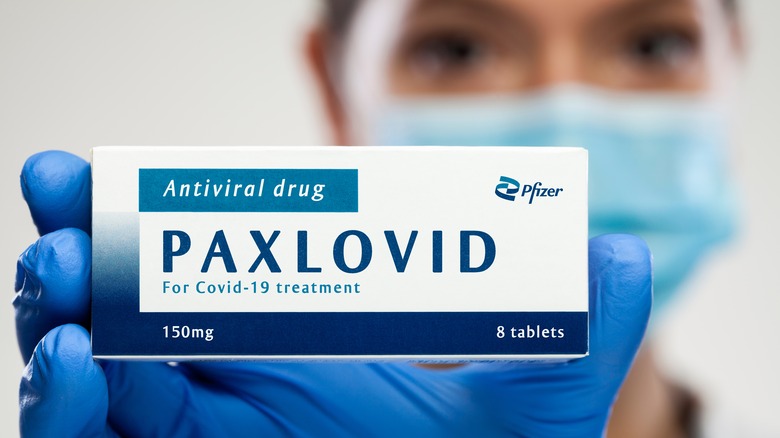Why An Effective Treatment Against COVID-19 Is Remaining Unused In Hospitals
Since the COVID-19 pandemic first swept through our homes, communities, and the world at large, scientists and medical professionals have been discovering more and more methods for preventing and combating the virus. According to the Centers for Disease Control and Prevention (CDC), vaccines remain the best strategy for preventing the spread of the virus, as well as mitigating severe symptoms associated with it. If you still end up contracting COVID and are considered high risk or immunocompromised, there are approved antiviral drugs that doctors can prescribe to lessen the virus's severity (via Yale Medicine).
One, in particular, is called Paxlovid and is comprised of two medications, nirmatrelvir and ritonavir, per Yale Medicine. This Pfizer-made antiviral pill is not only less expensive than other antiviral treatments but is also more effective at preventing severe symptoms that require hospitalization. A 2022 study published in The New England Journal of Medicine determined that Paxlovid reduced hospitalization and death rates by 89%.
Although Paxlovid has been proven to significantly mitigate severe COVID symptoms, it remains underutilized in hospitals and medical settings. Why are doctors not prescribing this lifesaving drug?
Reasons why doctors are not prescribing Paxlovid
As valuable and effective as Paxlovid is in reducing hospitalizations and deaths in immunocompromised or high-risk patients, White House Chief Medical Adviser Dr. Anthony Fauci states that the drug is not being used as much as it should (via NBC News). There may be a few reasons for this, starting with the fact that because the drug is so new, doctors may be reluctant to prescribe it to their patients, per NBC News. There are also restrictions surrounding who is qualified to receive the drug that may be contributing to the lack of prescriptions, per NBC News.
A big reason why doctors may not be prescribing Paxlovid, however, is simply that they are not aware that it is available. When the drug first came out in December 2021, there was not enough to go around, per NBC News. Dr. Ryan Maves, an infectious diseases and critical care physician explained to the outlet, "I think part of the challenge is so early on there was such little supply, and getting ahold of it was a real challenge. But the folks caring for patients who are at high risk may not know it is so much easier to get now."


